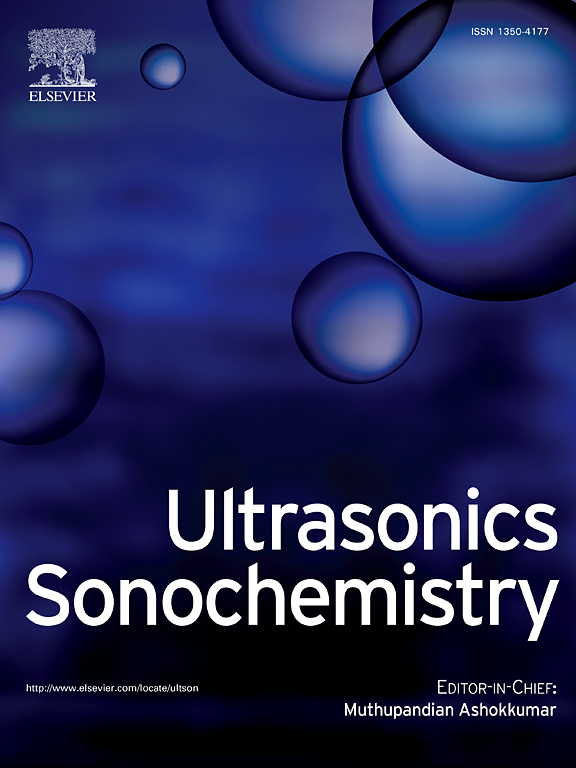Surfactant-assisted phase selective sonochemical synthesis of sodium yttrium fluoride nanoparticles
IF 8.7
1区 化学
Q1 ACOUSTICS
引用次数: 0
Abstract
The potential of rare earth-doped sodium yttrium fluoride (NaYF4) as upconverting nanoparticles extends to various applications, from electronics to biology. The hexagonal (β) phase of NaYF4 nanoparticles is known to exhibit a photoluminescence quantum yield higher than the cubic (α) phase. The typical synthetic methods for β-NaYF4 present limitations, such as low colloidal stability in aqueous medium and the need for ligand exchange. Herein, we employed high-throughput robotics, automated sonication, and high-throughput X-ray diffraction (HT-XRD) to synthesize and characterize hundreds of samples under various conditions and obtain NaYF4 nanoparticles dispersible in an aqueous medium. We characterized the samples through XRD for phase determination, SEM and TEM for morphology assessment, UV–Vis spectroscopy and zeta potential for colloidal stability evaluation, and photoluminescence spectroscopy and time-resolved photoluminescence spectroscopy to investigate their upconverting properties. We found that only sodium dodecyl sulfate (SDS) promotes β-NaYF4 formation. The order of addition is also important: adding SDS before the precursor salts leads to pure β-NaYF4 formation. Our proposed mechanism for β-NaYF4 formation involves the initial formation of smaller α-NaYF4 crystals in the presence of SDS, which were more easily converted to β-NaYF4 during sonication compared to the larger α-NaYF4 crystals formed in the absence of SDS.
求助全文
约1分钟内获得全文
求助全文
来源期刊

Ultrasonics Sonochemistry
化学-化学综合
CiteScore
15.80
自引率
11.90%
发文量
361
审稿时长
59 days
期刊介绍:
Ultrasonics Sonochemistry stands as a premier international journal dedicated to the publication of high-quality research articles primarily focusing on chemical reactions and reactors induced by ultrasonic waves, known as sonochemistry. Beyond chemical reactions, the journal also welcomes contributions related to cavitation-induced events and processing, including sonoluminescence, and the transformation of materials on chemical, physical, and biological levels.
Since its inception in 1994, Ultrasonics Sonochemistry has consistently maintained a top ranking in the "Acoustics" category, reflecting its esteemed reputation in the field. The journal publishes exceptional papers covering various areas of ultrasonics and sonochemistry. Its contributions are highly regarded by both academia and industry stakeholders, demonstrating its relevance and impact in advancing research and innovation.
 求助内容:
求助内容: 应助结果提醒方式:
应助结果提醒方式:


